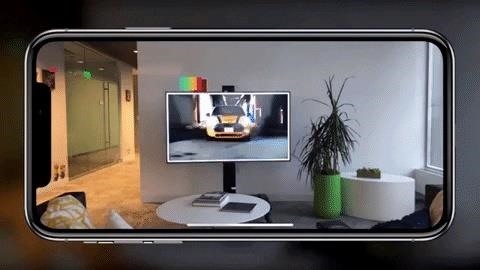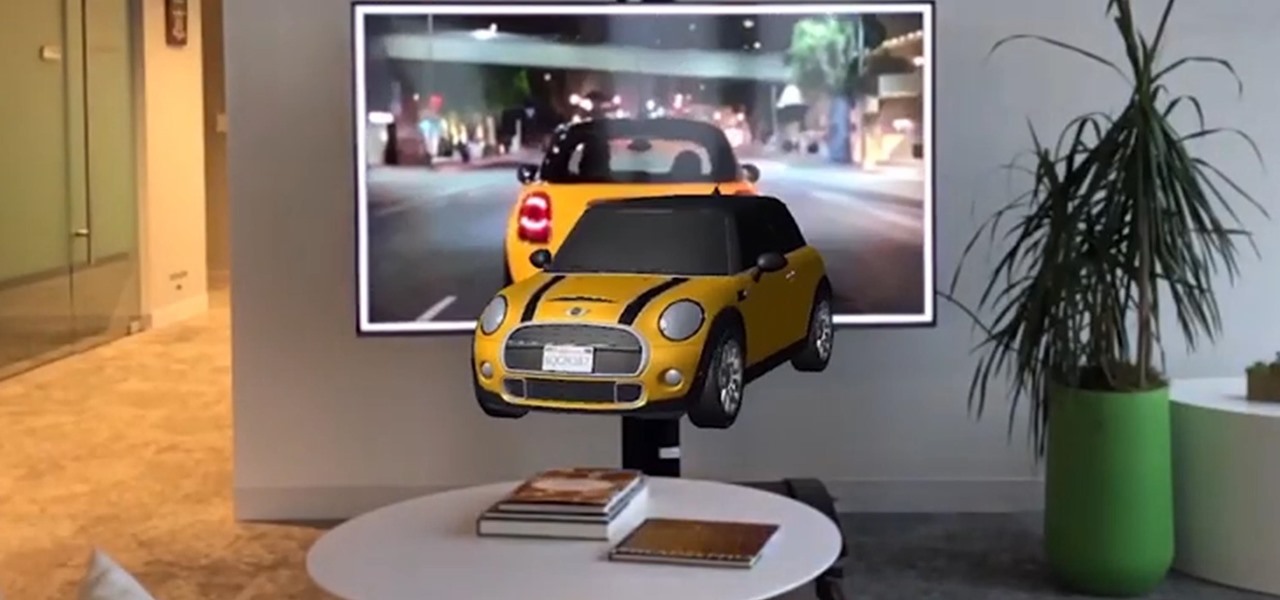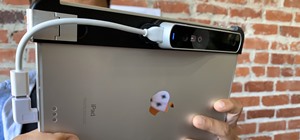Best known for its mobile phones and television sets, South Korea's LG has had a quieter presence in the US compared to the country's homegrown efforts.
Now, the company is leveling up its augmented reality capabilities with 3D advertisements that spring from home televisions, in a move that competitors in the US are likely to want to follow.
- Don't Miss: AT&T Begins Selling Magic Leap One Nationwide Online, Debuts Commercial Promoting DirecTV Now
LG's telecom subsidiary, LG Uplus, and startup Eyecandylab have launched an app that works with two Korean home shopping channels.
With the U+ AR Shopping app, available for iOS and Android in South Korea, TV viewers tuned in to select live home shopping channels can use their smartphone cameras to reveal text bubbles and 3D images for certain products. The footage then triggers the smartphone to present the item in the home via AR, allowing the user rotate it, place it, and buy it.
Some users will have a very good reason to download the app: LG Uplus' 5G subscribers can receive AR-only discounts of 5% on items, but to use the app they must have an ARCore or ARKit-compatible smartphone.

In addition to launching the AR service via its app, LG Uplus is also trying to sell the data-on-steroids mobile service that makes this sort of ad run faster -- 5G. The company is currently in the middle of a 5G face-off with local wireless competitors, such as SK Telcom, which has partnered with Samsung on launching 5G-enabled TVs, smart offices, and video streaming. With all this activity, it's little wonder South Korea has the largest number of 5G users.



Similarly, in the US, wireless giants AT&T and Verizon are also fighting to be top dog in the 5G space. In fact, AT&T recently complained about Verizon's "first to 5G" ad. AT&T has also been trumpeting its 5G advertising skills, for example, by offering 5G-enabled experiences at football stadium kiosks.
But while wireless companies squabble over the new AR landscape, smaller, digital-native brands are miles ahead when it comes to letting customers play with 3D item previews. In 2017, Amazon launched its AR View, which lets users see 3D versions of items encountered in its smartphone app. Also, companies like Houzz and CGTrader have created augmented reality previews for products like furniture to assist potential buyers.

In the case of the LG Uplus app, the experience only works for items seen on TV, which puts it into an entirely different class. Still, it does sound a bit like something we've seen before: We Are TV is a smartphone-enabled augmented reality app that gamifies popular TV shows in France, and its creators plan to offer in-app purchases.
In the past, the best AR innovations have relied on high-end, often impractical headsets that are out of the question for most mainstream consumers. And mobile AR via smarphone is only now truly coming into its own.
Could an app that works with our legacy television sets be an elegant workaround to help spur the mainstreaming of AR worldwide? The companies behind this particular launch seem to think so. In the next few years, the TV already in many homes may prove to be the easiest way to transmit augmented reality ads to the less-tech savvy consumer.
Just updated your iPhone? You'll find new features for Podcasts, News, Books, and TV, as well as important security improvements and fresh wallpapers. Find out what's new and changed on your iPhone with the iOS 17.5 update.























Be the First to Comment
Share Your Thoughts